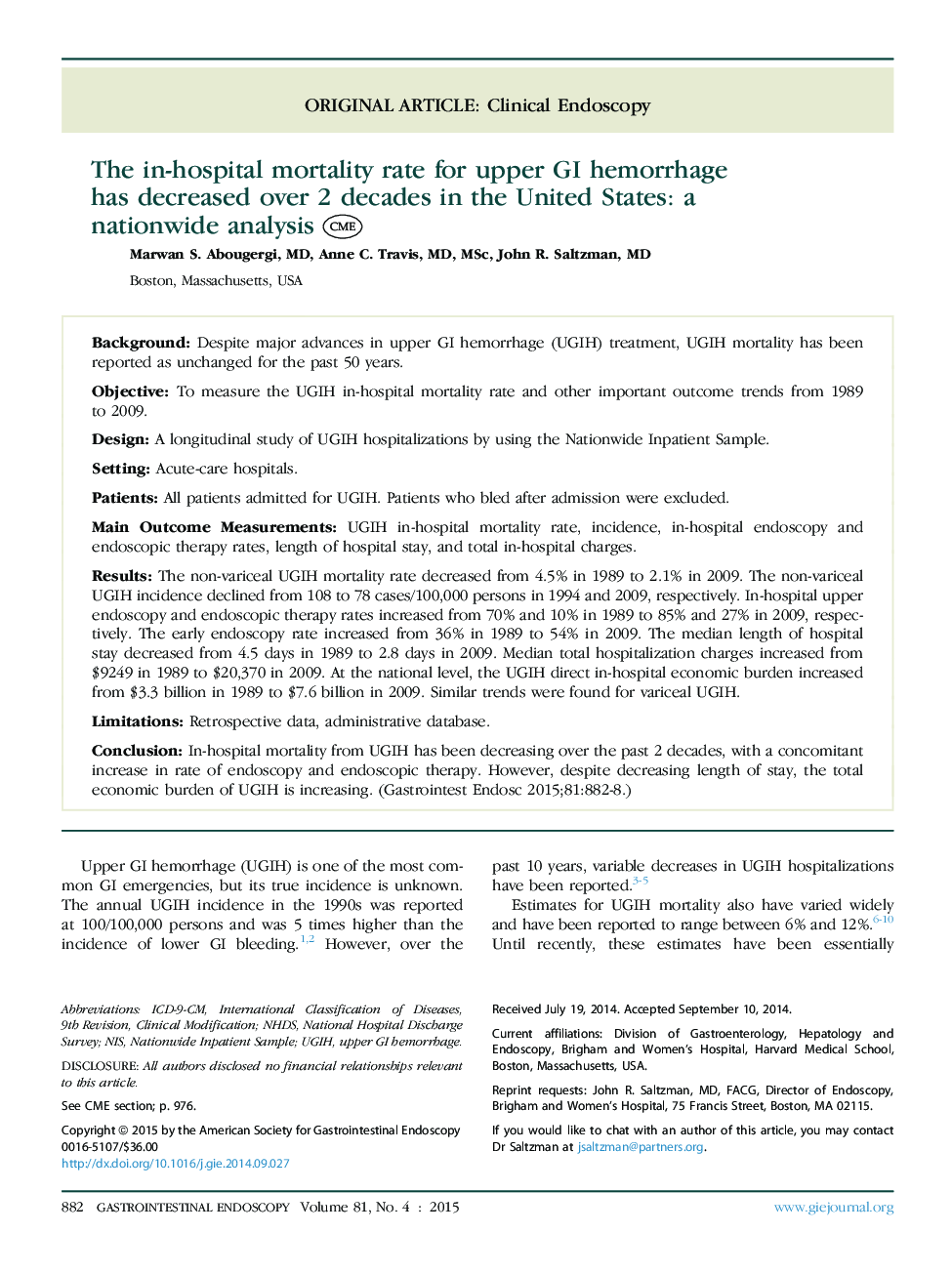| Article ID | Journal | Published Year | Pages | File Type |
|---|---|---|---|---|
| 6097836 | Gastrointestinal Endoscopy | 2015 | 8 Pages |
BackgroundDespite major advances in upper GI hemorrhage (UGIH) treatment, UGIH mortality has been reported as unchanged for the past 50 years.ObjectiveTo measure the UGIH in-hospital mortality rate and other important outcome trends from 1989 to 2009.DesignA longitudinal study of UGIH hospitalizations by using the Nationwide Inpatient Sample.SettingAcute-care hospitals.PatientsAll patients admitted for UGIH. Patients who bled after admission were excluded.Main Outcome MeasurementsUGIH in-hospital mortality rate, incidence, in-hospital endoscopy and endoscopic therapy rates, length of hospital stay, and total in-hospital charges.ResultsThe non-variceal UGIH mortality rate decreased from 4.5% in 1989 to 2.1% in 2009. The non-variceal UGIH incidence declined from 108 to 78 cases/100,000 persons in 1994 and 2009, respectively. In-hospital upper endoscopy and endoscopic therapy rates increased from 70% and 10% in 1989 to 85% and 27% in 2009, respectively. The early endoscopy rate increased from 36% in 1989 to 54% in 2009. The median length of hospital stay decreased from 4.5 days in 1989 to 2.8 days in 2009. Median total hospitalization charges increased from $9249 in 1989 to $20,370 in 2009. At the national level, the UGIH direct in-hospital economic burden increased from $3.3 billion in 1989 to $7.6 billion in 2009. Similar trends were found for variceal UGIH.LimitationsRetrospective data, administrative database.ConclusionIn-hospital mortality from UGIH has been decreasing over the past 2 decades, with a concomitant increase in rate of endoscopy and endoscopic therapy. However, despite decreasing length of stay, the total economic burden of UGIH is increasing.
